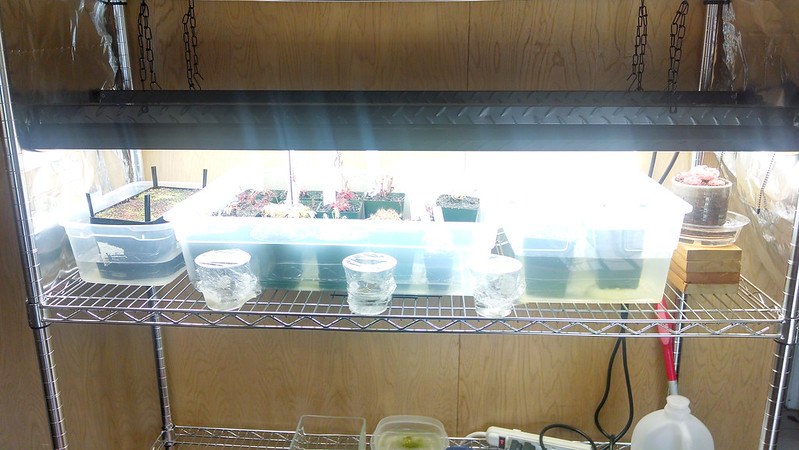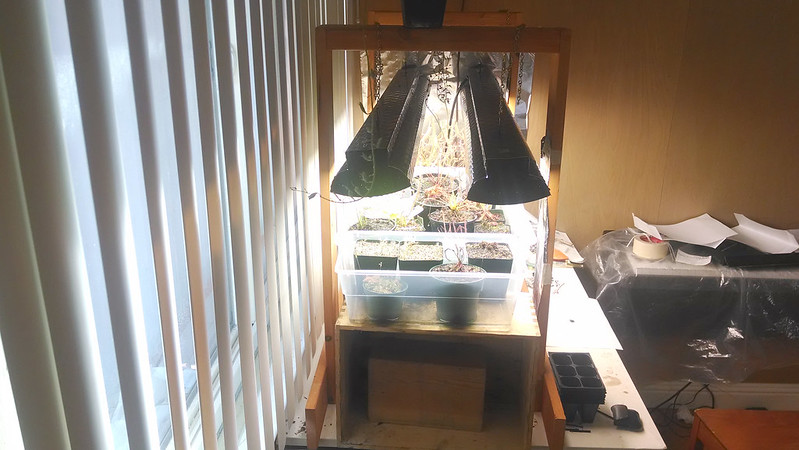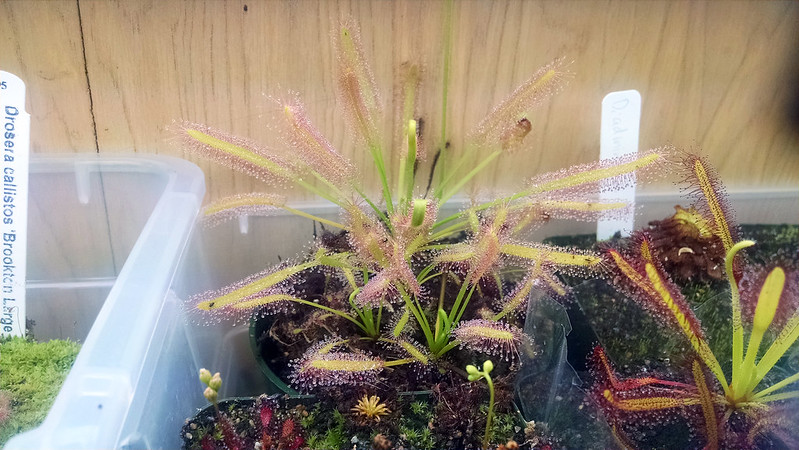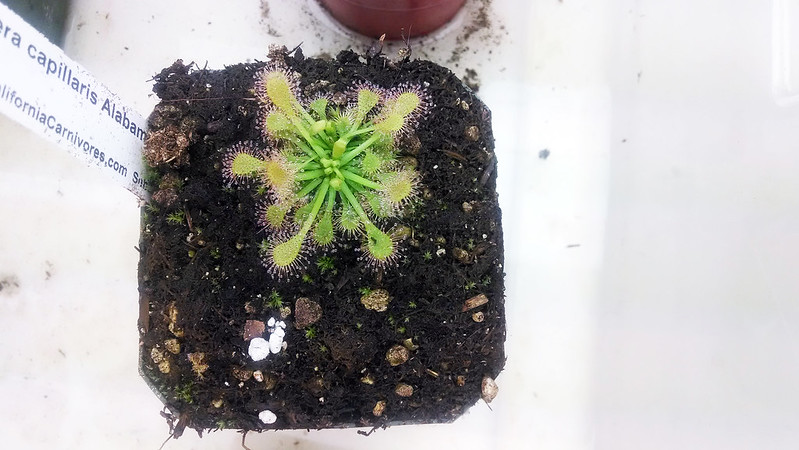I've been trying to write a post about light for sundews (and carnivorous plants in general) for a while. I'd started several posts and then shelved the idea for later – it's a pretty big subject, and I definitely don't have the definitive word on it. However, I've been getting a number of requests lately to talk about my setup, specifically my lighting situation, so I've got to tackle it.This is part of a series of posts describing various aspects of cultivation, which will hopefully be useful to new growers trying to solve the challenges of growing carnivores, and experienced growers who are always looking to improve their collection. The full series can be read here, or by topic on the Series page.
I'm going to make 2 posts on the topic. This one will deal with the overall importance of light, and how different light levels will affect your plants. Part 2 will deal with technical specs, including which lights I use, how I position them, and how much it costs.
Carnivorous plants need a lot of light!
 |
| My lights light up the whole room. |
 |
| It's not too expensive, but there are costs. I'll talk about that next time. |
I don't believe sundews can be successfully grown on windowsills, or even in most greenhouses. Windowsills usually only offer 3-4 hours of direct sun (at most) and the vast majority of greenhouses have some degree of shading to help manage heat. I'm far from an expert, but most pictures I've seen of sundews grown in greenhouses are under-colored with lackluster dew production. I'd love to hear from growers who have figured out how to grow Drosera in a greenhouse environment, by the way!
How can you tell if a sundew is getting enough light? There are 3 main things to look at: robust, upright growth; reddish coloration somewhere on the plant; and lots of big dewdrops on the leaves. Consider this Drosera capensis:
 |
| A D. capensis growing in good light conditions is very lovely. |
I think color is the number one indicator if you're wondering about your light conditions. Dew production can be reduced by low humidity or too much wind, and other things can mess up leaf growth, but if there is no red color on your sundew you can safely assume that it's under-lit. Even D. capensis 'Albino', a cultivar that is defined by its lack of red pigment, gets a pink blush in the tentacles if properly lit.
 |
| This plant also hasn't been fed much recently. |
Plants grown in higher light conditions will also tend to be more compact than those that are somewhat under-lit. Consider this clump of Drosera capillaris.
 |
| The perspective isn't the best, but the leaves are flat against the soil. |
 |
| With more light they get much more upright. |
Providing a proper amount of light is one of the most important things you can do to make sure your plants stay healthy. Light-stressed plants are more susceptible to water stress and pests, and are harder to keep in cultivation. When looking to perfect your growing environment solving the light question is one of the most important to answer.
More to come in part 2.
hi i've been setting up a place for my plant indoors the only remaining problem is that i don't know what light color should i use? should i use a warm white or cool white or daylight? thanks
ReplyDeleteI use a mix of warm and cool light. I think for my 3 bulb fixtures I use one 4500k bulb, one 5000k bulb, and one 6500k bulb. I'm not 100% positive this is necessary, but my plants have responded well.
DeleteGreat! thanks!
DeleteI agree windowsills definitely do not get enough sunlight! Also noticed in the greenhouse too that the plants don't get as much sun as mine do at home. I think you saw the drosera at the greenhouse and they seem to be getting decent lighting but I have noticed some pings a brought in stay green rather than coloring up! Its great that you mention it though, you don't see too many people talking about insufficient lighting in greenhouses. Do you think some kind of light set up over plants in the greenhouse would help in getting sufficient lighting or would it be pointless since a lot of that light would be lost since its more of an open area?
ReplyDeleteThere are definitely greenhouses that have enough light for Drosera – I've seen pictures. As for setting up lights in a greenhouse, you could do it. Maybe just having a portion of the greenhouse with less shading would be a better long-term solution. I'm blessed with a friendly climate here in the Bay Area, so I'm just looking to do some outdoor growing once I build a bit of a windbreak for my plants.
DeleteHi dev... I really enjoyed reading ur article. But have experienced with led light? Bcos I would like to now which is best for growing drosera and pings with led or cpl or fluorescent bulb.
DeleteHi David. Currently T8 fluorescent light bulbs are the most efficient light to use for growing plants, based on my research. This takes into account the cost of buying the bulbs and fixtures, the ease of finding the appropriate parts, the wattage per lumen, and the photosynthetically-available spectrums they produce. This is my personal assessment, and there are people who disagree with me. I think that perhaps in 5 years there will be LED systems which outperform fluorescent bulbs in terms of cost or intensity, but right now I think T8 is the way to go.
DeleteHi, I find reading this article a joy. It is extremely helpful and interesting and very much looking forward to reading more of your work.. make-christmas-laser-lights/
ReplyDelete